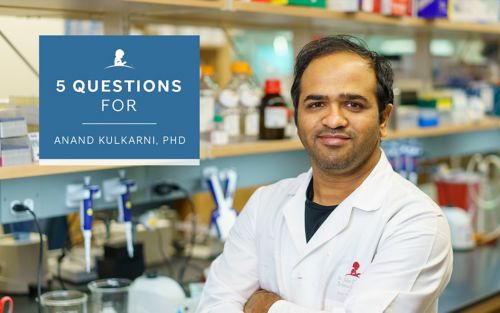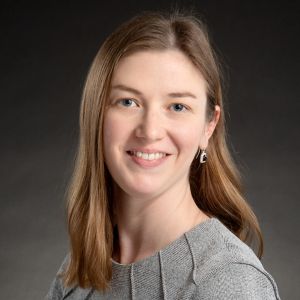St. Jude Family of Websites
Explore our cutting edge research, world-class patient care, career opportunities and more.
St. Jude Children's Research Hospital Home

- Fundraising
St. Jude Family of Websites
Explore our cutting edge research, world-class patient care, career opportunities and more.
St. Jude Children's Research Hospital Home

- Fundraising
5 Questions for Anand Kulkarni, PhD

For associate scientist Anand Kulkarni, PhD, working at St. Jude provides opportunities to solve the “boundless jigsaw puzzle” that is research.
This question-and-answer series explores the motivations, inspirations and accomplishments of investigators at St. Jude. Anand Kulkarni, PhD, is an associate scientist in the laboratory of Jay Bikoff, PhD, in the St. Jude Department of Developmental Neurobiology. His research focuses on revealing how the motor system, comprising the brain and the spinal cord, functions at a cellular and circuit level. He probes the role played by spinal interneurons, a less studied cell type, in executing movements with a specific focus on the V1 interneurons.
1. What do you like most about being a scientist?
Understanding the universe is akin to solving a boundless jigsaw puzzle. I derive a lot of joy and thrill knowing that the work that we are doing will fill in a piece or two over our lifetime. On a day-to-day basis, I like that there are fresh challenges every day, and the work never gets monotonous. The fact that you are surrounded by curious, smart and friendly people is a nice perk.
2. What questions are you trying to answer through your research?
We are trying to obtain a deep understanding of how the motor system, specifically the spinal cord, functions at the level of neuronal circuits. The spinal cord has hundreds of neuron types that contribute to its functioning. We focus on the inhibitory V1 interneurons whose disruption has been shown to cause severe motor deficits and whose degradation has been speculated to precede that of motor neurons in certain amyotrophic lateral sclerosis (ALS) models. We take a multi-pronged approach, reflected in the variety of techniques employed by our lab, to investigate the role V1s play in spinal motor circuits.
3. What resources or capabilities set St. Jude apart as a great place to do research?
The shared resources and the unparalleled support and collaboration St. Jude provides are unique features of conducting research here. It allows scientists to focus on asking probing questions, regardless of how technically challenging the experiments are or whether they have expertise in that area. The quality of leadership and operations teams at St Jude is also exceptionally high.
4. How have mentors at the different stages of your training shaped your career?
When you work with someone for years together, especially in science, you get to observe their thinking very closely. The most important contribution all my mentors have had, in addition to teaching me how to “do” science, is how to think and analyze rigorously. I have been lucky to have mentors who have always been kind and generous and treated people well.
5. What is one piece of advice you’d give to people considering careers in science?
Come on in; the water is fine! For me, science is defined by working on deep questions about the universe using bleeding-edge techniques and ideas with brilliant, funny and kind people. Find that set of questions and that team where you feel excited to get to work each morning.







